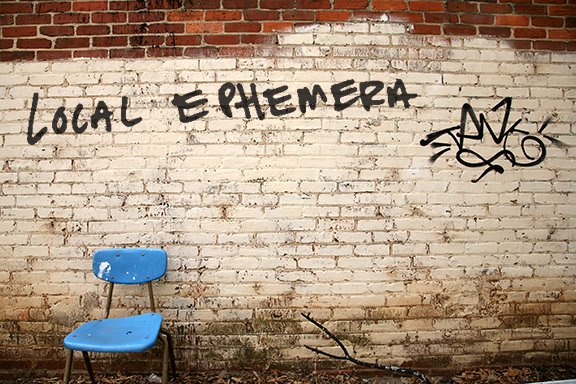
Jonathan: Hey, alright, so after seeing the your work at Ruby Green, I had a couple of questions about your series of photographs. Namely, how did the idea of using male dolls in your photography first come about? and what do the dolls signify for you?

John Trobaugh: "Hey man! The short answer is that the dolls were part of a drawing project that was exploring sentinel moments or memories from my childhood. Mostly they were negative but one of the positive memories was playing with dolls as a way to escape. I was doing drawings from memory, and i could not get the drawings from the dolls to feel right. So I photographed the dolls and me playing with them to see if that would help. Then I began to explore the memory and try to re-create the mental image rather than the physical image. That's when I started making progress! I realized what would make me the happiest is if I could create images as if they were screen-shots from my mind-play.

The background is that I felt isolated. We lived in southeast Alabama with no real connections. Three brothers and a sister, I knew I was different from an early age - I reasoned differently and my affinities were different as well. Luckily, my neighbors had played with dolls and had a series of foster kids who did as well, So I was able to get cast-offs from them. I would use the dolls as proxies for people. They had their own world. I used whatever was around me to make a little dirt village out back. When my brothers destroyed every thing I would make I learned to find hiding places in the woods where I could go and they could not touch me."

Jonathan: "It's really interesting to think of your photographs as images taken directly from your childhood imagination, which I know for me was a very powerful, almost engulfing part of myself. This also makes me realize how biographical these works are, in essence you were creating your own dreamworld in which it was normal for two men to be together, because you could not see any examples of this in reality. That is probably a fairly common form of escape for many gay youth (at least before the Internet). Your recent work seems to be moving away from a portraiture style in which the dolls appear to be posing for the photograph and towards more candid action shots of multiple dolls, often in military uniforms. How has your approach towards using the dolls changed?"


John Trobaugh: "Hey man! The short answer is that the dolls were part of a drawing project that was exploring sentinel moments or memories from my childhood. Mostly they were negative but one of the positive memories was playing with dolls as a way to escape. I was doing drawings from memory, and i could not get the drawings from the dolls to feel right. So I photographed the dolls and me playing with them to see if that would help. Then I began to explore the memory and try to re-create the mental image rather than the physical image. That's when I started making progress! I realized what would make me the happiest is if I could create images as if they were screen-shots from my mind-play.

The background is that I felt isolated. We lived in southeast Alabama with no real connections. Three brothers and a sister, I knew I was different from an early age - I reasoned differently and my affinities were different as well. Luckily, my neighbors had played with dolls and had a series of foster kids who did as well, So I was able to get cast-offs from them. I would use the dolls as proxies for people. They had their own world. I used whatever was around me to make a little dirt village out back. When my brothers destroyed every thing I would make I learned to find hiding places in the woods where I could go and they could not touch me."

Jonathan: "It's really interesting to think of your photographs as images taken directly from your childhood imagination, which I know for me was a very powerful, almost engulfing part of myself. This also makes me realize how biographical these works are, in essence you were creating your own dreamworld in which it was normal for two men to be together, because you could not see any examples of this in reality. That is probably a fairly common form of escape for many gay youth (at least before the Internet). Your recent work seems to be moving away from a portraiture style in which the dolls appear to be posing for the photograph and towards more candid action shots of multiple dolls, often in military uniforms. How has your approach towards using the dolls changed?"

John T: "Now I still like the idea of the images from my mind, but they are evolving. Not all the mental images are positive. They don't all make clear statements. They are in part about relationships-with each other and with the world at large. One of the veins is this body of work is to create images that are so strong that they make a permanent connection. Specifically right now I want to create a body of images that, if not replace, associate themselves with the American landscape. One of the things that goes unnoticed is that most of the American landscape is heterosexual and white. I will consider my series a success if you see one of the traditional American imagery and think of my dolls. So the images in Ruby Green hint at this through the police, military, fireman imagery (the flags and traditional Alabama campus backdrop). This is a deep rich vein that I feel I have barely scratched the surface."


1 comment:
this is a great interview-thank you, jonothan!
Erin
Post a Comment